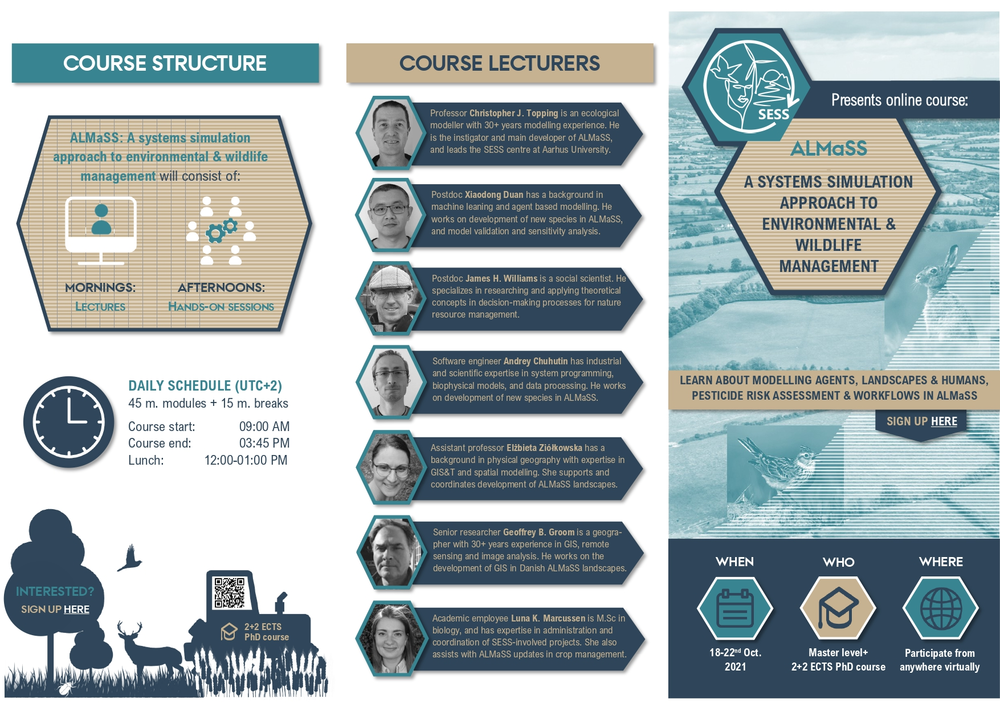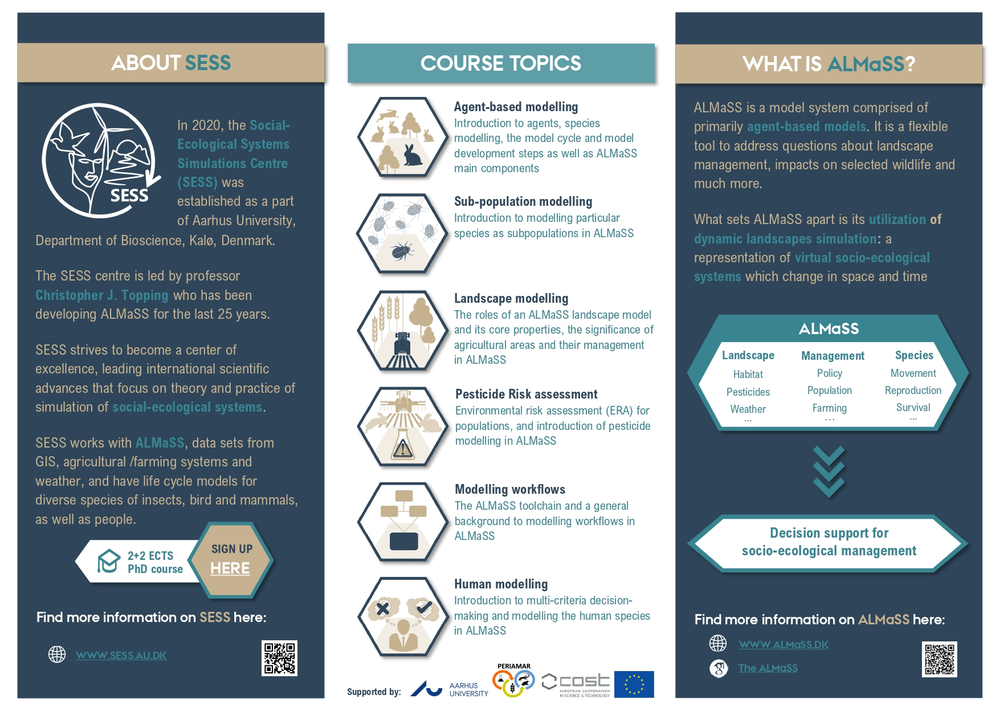Giving Beekeeping Guidance by cOmputatiOnal-assisted Decision making
ALMaSS: creating species models and new landscapes
Pollinators play a vital role in maintaining both semi-natural and agricultural ecosystems and healthy populations bolster food security, livelihoods and social wellbeing. With evidence that many species of pollinators are in decline, their conservation and management is of great public, economic and political interest. As a result, the ecology and conservation of managed and wild pollinators is a rapidly growing field of research, alongside the study of their associated ecosystem services.
Between 18 and 22 October, Aarhus University organised an online 4-day long course titled "ALMaSS: A systems simulation approach to environmental & wildlife management". The course familiarised its participants with the background, use, possibilities and components of the landscape-scale simulation system ALMaSS. Moreover, it showed them where to start to create species models or new landscapes.

ALMaSS is a landscape-scale simulation system for investigating the effect of changes in landscape structure and management on the population size and distribution of animals in the Danish landscape. It is also an agent-based model system which means that the animals are modelled as individuals (agents) which will move around inside a virtual landscape to breed and die much in the same way as the real animals do in their natural environment. The system has been up since 2010 as an open-source open-science project hosted on GitLab.
The main target audience for the online course were PhD students and scientists. A total of 25 participants attended the course, amongst whom B-GOOD partners Prof. Christopher John Topping, Dr. James Henty Williams, Dr. Xiaodong Duan (Aarhus University); Prof. José Paulo F.A. de Sousa (University of Coimbra); Assistant Prof. Elżbieta Ziółkowska (Jagiellonian University).
During the event, B-GOOD partners held 9 presentations in the following topics:
-
ALMaSS Introduction
-
ALMaSS Toolchains
-
ALMaSS Subpopulation
-
ALMaSS ApisRAM
-
ALMaSS Pesticides And Environmental Risk Assessment ERA
-
ALMaSS Landscape Model Session: An Introduction to the Landscape Model
-
ALMaSS Landscape Model Session: Mapping agricultural areas
-
ALMaSS Landscape Model Session: Practical Session
-
ALMaSS Landscape Model Session: Crop management

An evaluation of the course performed in its end showed that it proved to be insightful and useful for its participants. The ALMaSS model would aim to provide crucial information about pollinators’ behavior and the effects of different stressors on them. A powerful predictive model such as that one is an invaluable tool for both scientists and policy makers.
More information about the ALMaSS model could be obtained here.